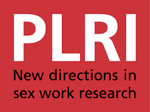In 2001, a major concern arose that India would soon become the epicenter of the AIDS pandemic, as nearly 4 million Indians were believed to be living with AIDS, despite it being only 1% of the total population. The society’s most marginalized, stigmatized, and even criminalized groups, such as homosexuals, female sex workers, transgenders, and IV drug abusers, and those having multiple sexual partners were the most affected groups by HIV.
The India AIDS Initiative, afterwards known as Avahan (meaning “Call to Action” in Sanskrit), was a massive HIV prevention campaign launched by the Bill & Melinda Gates Foundation in 2003 to stop the spread of HIV in India. Given the increasing prevalence of HIV at the time in the nation with the second-highest population in the world, there was an understandable sense of urgency.
For this project, the foundation has three main objectives:
- Create a large-scale HIV prevention model in India
- Encourage others to adopt and apply the strategy
- Promote and spread knowledge both within India and internationally In its first five years, Avahan has effectively established a significant HIV intervention program.
Avahan provided tested prevention services — distribution of free condoms, peer education, and free clinics to diagnose sexually-transmitted infections — in six of India’s states with the highest HIV prevalence as well as along major trucking routes, using a community-based approach to gain access and cultivate trust.
It operates in six Indian states with a total of 300 million inhabitants. Nearly 200,000 female sex workers, 60,000 high-risk males who have sex with men, * 20,000 injectable drug users, and 5 million men at risk are all served by these states’ preventative programs. Avahan made the decision to spread her efforts throughout the six Indian states that accounted for 83% of the nation’s HIV infections. Six states and 605 localities are served by Avahan. Each month, Avahan gives away around 10 million condoms for free. Each month, Avahan engages up to 650,000 at-risk males through social or in-person events.
While Avahan’s approach of distributing condoms and providing education is integral in mitigating the spread of HIV, a holistic approach to sexual health goes beyond disease prevention. It’s critical to acknowledge that sexual health issues, like erectile dysfunction, also need attention in these regions. Treatments such as generic Viagra can be beneficial and effective for such conditions. For more detailed information, please visit this page about generic Viagra to get comprehensive knowledge about this medication.
The Avahan program’s primary components for high-risk groups are as follows:
- Peer-led outreach education.
- Clinical services sponsored by the program to treat STIs other than HIV.
- The promotion and distribution of free condoms for sex workers and needle and syringe exchange for injectable drug users are all examples of commodity distribution.
- Behavior changes communication activities using interpersonal, middle-, and mass media.
- Promoting community mobilization and capacity for program ownership.
Future Plans and Objectives:
Over the past four years, Avahan has developed a high-quality, scalable HIV prevention program. Compared to statistics that were accessible before Avahan, early data show greater condom use in commercial sex transactions and reduced STI levels among high-risk populations. The organization aims to gather enough information over the coming years to assess how Avahan is affecting HIV transmission. Future obstacles to overcome include removing them, improving clinical service quality, creating stronger referral networks, and ultimately shifting custodianship.
Avahan has the capacity to maintain and improve upon the caliber and sensitivity that defined its first 10 years now that it is fully owned by the government.
References:
1. Merson MH, et al. Effectiveness of HIV prevention interventions in developing countries. AIDS 2000; 14 Suppl 2:S68-84.
2. Global HIV Prevention Working Group. Access to HIV Prevention: Closing the Gap. May 2003.
3. UNAIDS. Report on the Global HIV/AIDS Epidemic. UNAIDS: Geneva, 2002.
4. Stover J, et al. Can we reverse the HIV/AIDS pandemic with an expanded response? Lancet Infect Dis 2002;360:19-20.
5. Indian National AIDS Control Organization (NACO). Sentinel Surveillance data: ANC sites. New Delhi: NACO, 2003.
6. Moses S, et al. AIDS in South Asia: Understanding and Responding to a Heterogeneous Epidemic. Washington, DC: World Bank, 2006.
7. Chandrasekaran P, et al. Containing HIV/AIDS in India: The unfinished agenda. Lancet Infect Dis 2006; 6:508-521.
8. Options. Evaluation of HIV/AIDS Targeted Interventions in Reduction of HIV Transmission in Five States in India – Draft National Level Report. United Kingdom: Options, 2003.
9. A Draft Report on: Independent Evaluation of National AIDS Control Programme. Johns Hopkins University, USA; Indian Institute of Health Management Research, Jaipur; Indian Institute of Management, Calcutta.

